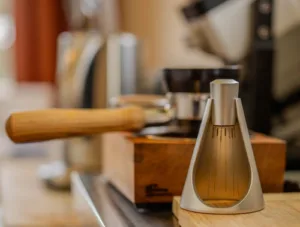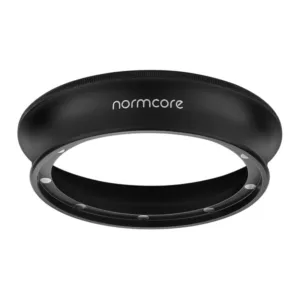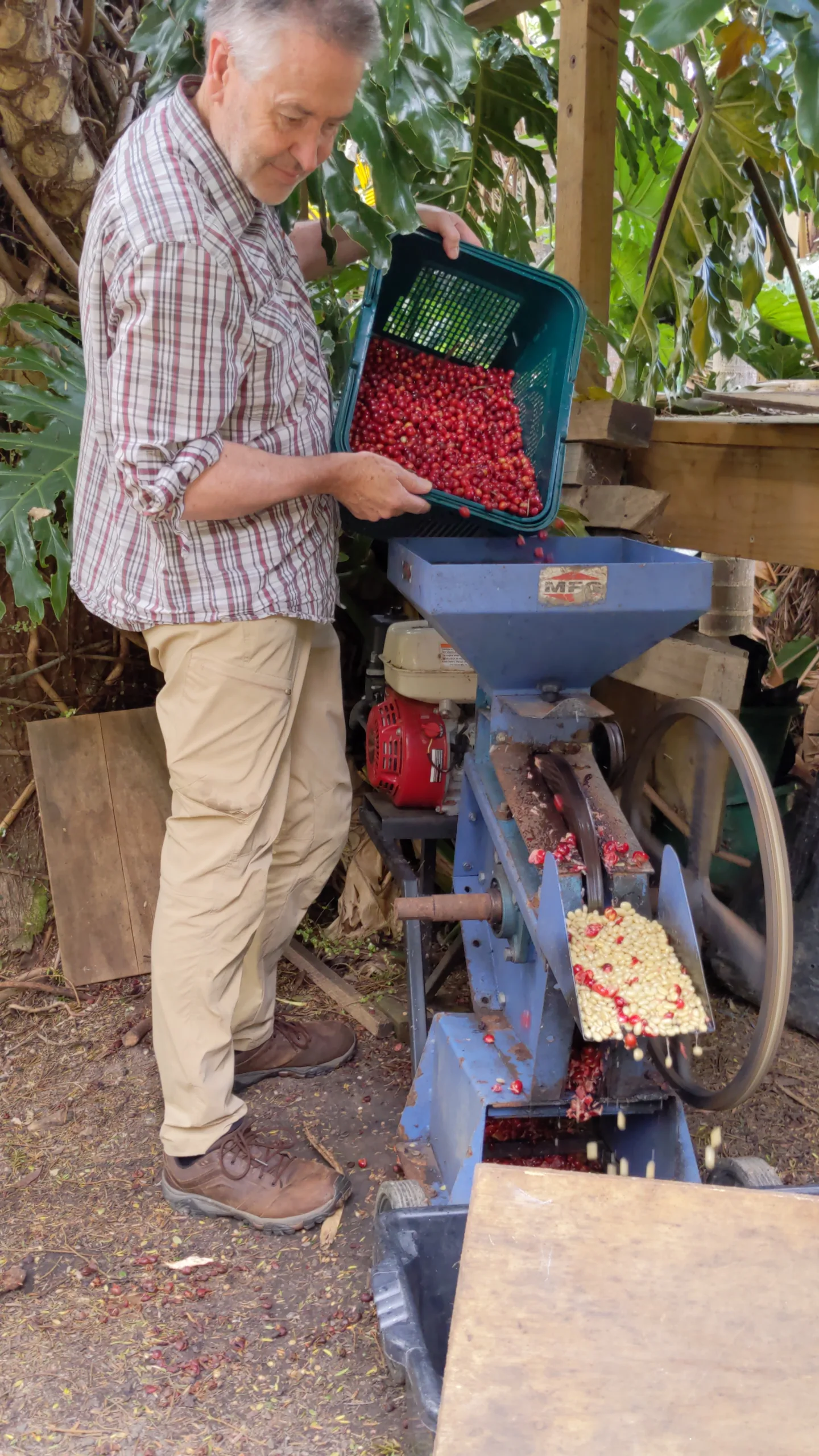If you are looking for one espresso recipe to be the best espresso recipe, you have already gone wrong. You need different espresso recipes for different roast levels.
If you under-extract coffee, it is sour. If you over-extract coffee it is bitter. Getting your extraction right is the key to sweet espresso drinks.
This espresso recipe is one in a series of 158 espresso recipes, mathematically generated to cater to every roast level.
Espresso Recipe 80/158 - 0.400 g/ml
ESPRESSO RECIPE:80/158 (0.4 G/ML)
15
minutes80
kcal299
μm90
c19
gm48
gmThis is the median roast-level recipe. There is a less than 10% chance this will be the right recipe for your roast level (unless you measured the density). It is simply the middle recipe with the least steps in either direction. Expect to have to try another recipe based on the taste test.
Ingredients
2.5 Espresso Ratio
18 gm VST Basket
8 bar Pressure
30 s Shot time
190 ml Cup size
15 ml Bypass water
127 ml Steamed milk
299 μm Grind setting
90 °C Temperature
19 gm Dose
48 gm Yield
Directions
- Pre-heat your espresso machine, portafilter, basket, and coffee cup
- Get your 19 grams of coffee single dose out of the freezer. If you are not single-dosing and freezing your coffee, read How to Store Coffee Beans - 9 tips. While you are at it, read Best Coffee Beans - Six Purchasing Tips. Shots of espresso these days are nearly always a double shot of espresso. Double shots are now the standard in America and many places around the world. The single shot of espresso is very rare. Traditionally, a single shot (solo) of espresso uses about 7g of espresso-fine grounds. If your you want to make a single, pull a double but use a split portafilter to halve the shot for you.
- Use RDT by giving them a spritz of water and stirring them. This reduces static electricity, clumping, retention and waste and produces stronger flavours (read the paper).
- Grind your frozen coffee, do not defrost. Using a dosing funnel, grind into the right-sized basket in a naked portafilter.
- Puck prep. Use a WDT tool to break up clumps and redistribute them. I do use a levelling tool, and a levelling palm tamper. Then I cover it with a shower screen to help evenly distribute the water.
- Place scales under your cup, tarre, and start the timer.
- Ramp up to 8 bar pressure. Pre-infusion (pause till first drip) is only required if the beans are super fresh (say within 2 days of roast) and are degassing so much extraction is being affected - pretty unlikely, so you probably don't need it. Watch the bottom of the naked portafilter with a mirror, ease of momentarily if you see spritzing. Allow the pressure to decline to 6 bars, to maintain a constant flow rate. Stop the shot when the target yield has been achieved. The extraction time should be roughly 30 seconds. If the shot has run very slow despite a high pressure, you need to grind coarser. If the shot has run to fast and you could not maintain pressure, you need to grind finer.
- Now, the most important step. Before adding milk, stir the expresso and crema, and then taste the wet spoon (you don't need a spoonful). Is the coffee sour? if so next time you make this coffee, extract more by using the recipe indicated by the button above.
- If the coffee is not sour, ask yourself if the coffee is very bitter. This is more difficult because all coffee is bitter to some extent. But you can reduce bitterness by extracting less. Go too far and it will turn sour. You are looking for the calm spot in between. Just above sour will taste the best. If you need to reduce bitterness next time you make this coffee, extract less by using the recipe indicated by the button above.
- Add the bypass hot water (optional). This reduces the blanket of milk and increases the apparent strength of the coffee while keeping the volume up.
- Add the steamed milk. Espresso con panna (whipped cream) may be a little OTT, bit adding 5-10ml of cream to your espresso steamed milk can really help get the texture right for that latte art, and help make a perfect espresso.
Recipe Video
Notes
- Don't get hung up on the details. If you can't change your pressure, maybe you don't have a full set of baskets, you don't know what that grind size even means. It doesn't matter. Providing you are changing the dose, the yield, the ratio, the bits you can, you will be changing the TASTE, and that is what matters. YOU are finding a RECIPE that tastes better than the last recipe you tried.
Equipment
 Freezer storagePot u0026 Screw Cap 70ml
Freezer storagePot u0026 Screw Cap 70ml Measuring cylinderGraduated Cylinder, 100ml
Measuring cylinderGraduated Cylinder, 100ml Digital scalesAcaia Lunar
Digital scalesAcaia Lunar Cup sizesClassic Range Cappuccino Cup (190ml)
Cup sizesClassic Range Cappuccino Cup (190ml) Espresso machineFlair 58
Espresso machineFlair 58 Milk steamerBellman CX25P
Milk steamerBellman CX25P VST Precision basketVST Precision Filter Baskets
VST Precision basketVST Precision Filter Baskets WDT ToolSworksdesign WDT Tool
WDT ToolSworksdesign WDT Tool TamperHappy Tamper
TamperHappy Tamper Knock box and Tamp stationThe Bloc Espresso Knock Box + Tamp Station
Knock box and Tamp stationThe Bloc Espresso Knock Box + Tamp Station Steaming u0026 Frothing Milk PitcherJoe Frex Steaming u0026 Frothing Milk Pitcher
Steaming u0026 Frothing Milk PitcherJoe Frex Steaming u0026 Frothing Milk Pitcher Lower shower screenBPlus Lower shower screen
Lower shower screenBPlus Lower shower screen Milk thermometerRhino Long Thermometer
Milk thermometerRhino Long Thermometer GrinderKafaTek Monolith Flat MAX
GrinderKafaTek Monolith Flat MAX Dosing funnelNORMCORE / MAGNETIC DOSING FUNNEL V2
Dosing funnelNORMCORE / MAGNETIC DOSING FUNNEL V2
An example of coffee I'm drinking
Finca La Glorieta
About the Producer
Hernando Arcila is a third-generation coffee farmer and began managing the family farm over 20 years ago. Much like many other generational farmers, Hernando’s focus over the past 20 years has been producing large volumes of coffee.
With prices being tremendously unstable, Hernando has began working with Cofinet in 2020 to bring the overall quality and premium up on his coffees.
About the coffee
ORIGIN: ARMENIA, COLOMBIA
PRODUCER: HERNANDO ARCILA
ALTITUDE: 1350-1400 METRES ABOVE SEA LEVEL
VARIETY: CATURRA
PROCESS: WASHED
About the Roaster
Finca La Glorieta – Hammerstone Coffee


